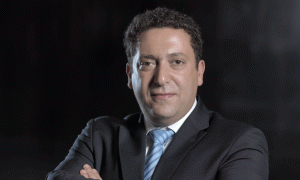Quiet Construction
Ahead of the Acoustics in Construction Summit taking place at Le Royal M
As the Middle East development market matures, more attention is being paid to health, safety and environmental issues, including noise pollution — a topic that will be addressed at the Acoustics in Construction Summit in Abu Dhabi at the end of the month.
Presenting at the summit, Dubai based science and engineering firm Vipac has worked on many real estate and infrastructure projects in the UAE and internationally, providing vibration control, noise control and construction acoustics consulting.
Vipac Emirates manager Tom Neudorfl says he has seen a shift in focus from end-user acoustics — anything from a noisy air-conditioning unit to thin walls and noisy neighbours — to an emphasis on decreasing the amount of noise produced during the construction process.
“There are so many different approaches to construction acoustics in the UAE because people come from all over the world. The industry has only recently started seriously thinking about monitoring construction noise and protecting workers,” says Neudorfl.
He attributes this increased awareness partly to a trend for management personnel moving across business sectors, for example people moving from the oil and gas sector, which employs stricter guidelines in terms of noise control, to the construction industry.
VOLUME CONTROL
However, limiting acoustics during the construction phase can be an expensive business: “You can eliminate construction noise by putting silencers on equipment, which will usually be provided by the client. However, this can be a grey area because some clients don’t care about the issue and won’t provide a budget for the necessary silencers or new equipment,” says Al Shafar General Contracting (ASGC) safety manager Steve Van Wyngaard.
While Wyngaard says it is better to eliminate the noise, he adds that if this is not possible the company provides personal protective equipment (PPE), such as ear muffs, to staff as a last resort. The company also complies with international standards which state that a worker should not work for more than six hours in an environment where the noise exceeds 85 decibels.
Similarly, Arup engineer and head of Qatar Green Building Council Hussein Moussa says most contractors use relatively old equipment and it is generally very rare for these companies to update their machinery and vehicles to incorporate silencers or other acoustical precautions due to the “cost implications”.
“There are minimal regulations relating to construction acoustics in Qatar, but on all of our construction sites we have a health and safety officer on duty to check that everyone is following the basic guidelines designed to protect employees’ hearing. We also provide PPE.”
Furthermore, he says that the company aims to monitor the noise produced in the evenings, especially in highly-populated areas where construction can be a significant source of noise pollution. “This isn’t such an issue if the project is situated in the middle of the desert,” adds Moussa.
Cash Strapped
While end-user acoustics, otherwise known as architectural acoustics, is a more widely-addressed issue, Neudorfl says there are still developments coming onto the market which do not meet standards in this area. Potential occupants are starting to consider the acoustical qualities of a building and demand better solutions. In a competitive market, this raises awareness between architects, developers and contractors.
Using the right designs, materials and employing quality workmanship is essential to producing a building that performs well acoustically. However, cash problems extend to architectural acoustics, adds Neudorfl.
“From a cost point of view, there are very few initiatives to use quality building materials. We see this in all areas of architectural acoustics. One of the greatest challenges is that there isn’t a well-established infrastructure or culture of testing products. A lot of materials are not backed by any form of independent testing.
“Acoustical considerations must come from the design stage. I’ve been in the region for six years and have seen a lot of change. When I started, acoustics were left to contractors to deal with, but I’ve seen a lot more interest from consultants and architects to address this early on,” adds Neudorfl.
UAE-based Archcorp lead architect Mujib Ur Rehman says that the company views construction acoustics as an important consideration in every project throughout the design stage.
The Acoustics in Construction 2010 Summit is intended to provide a platform to discuss, benchmark and learn from the Middle East’s construction acoustics innovators and leaders. Acoustic performance must be considered essential for the successful delivery of construction projects to end users, says the show’s organiser IQPC.
The framework for construction acoustics in the Middle East will be addressed at the event, in addition to topics such as improving project planning and design to ensure acoustic success, benchmarking building acoustics against case study sessions and mitigating the impact of construction phase noise control. “However, some greater guidance within local building codes could help to raise awareness in the industry,” adds Rehman.
“The whole market is maturing and issues such as acoustics and energy consumption are being considered more and more as part of the evolution,” concludes Neudorfl.
As such, Vipac claims to have had increased interest in its consulting services in the region, including acoustical measurements in completed buildings, acoustical considerations in the design stages, product testing and other assessments to ensure a project meets set acoustical specifications.

























